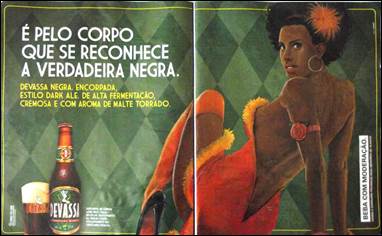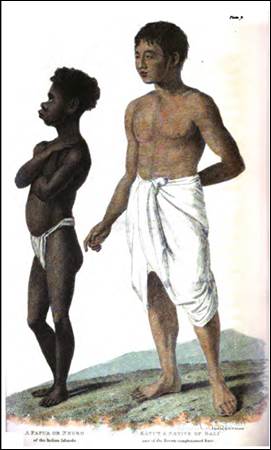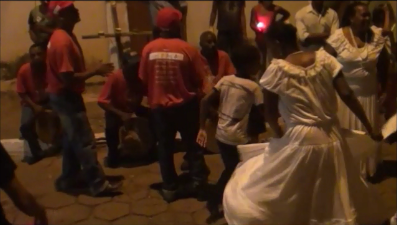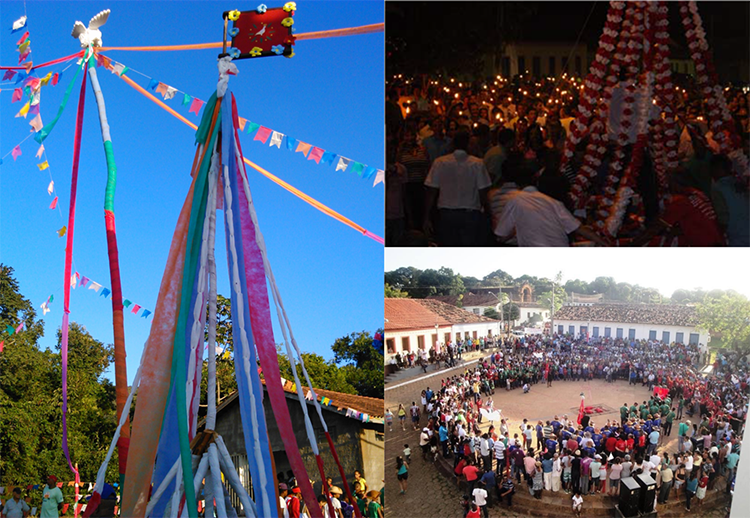Ana Wegner, editor for scientific popularization of the Revista Brasileira de Estudos da Presença, CAPES, Brazil/Université d’Artois, Arras, IDF, France.
The declaration of support for Open Science policies and practices with IDEIA (Impact, Diversity, Equity, Inclusion and Accessibility), made by SciELO in 2023, incentivized transformations in the editorial practices of the Revista Brasileira de Estudos da Presença. The journal undertook considerable changes in its operation – such as the possibility of publishing articles in preprint mode, the practice of publicizing peer reviews, and depositing research data related to articles published on the journal’s platform.
The Revista Brasileira de Estudos da Presença thus became the first journal in the field of Performing Arts to adopt Open Science practices in Brazil. The commitment “to promote diversity, equity, inclusion and accessibility, both in research and in society” that promotes the Open Science movement with IDEIA had, however, already been observable prior to this adherence.
The issue of equity in the Performing Arts was at the core of calls for articles in thematic sections such as Performance and Gender I and II (April/June 2024 and June/September 2024) and Performance and Transgender (July/September 2020). Inclusion and accessibility were central concerns of the numerous calls on educational aspects of theater, such as the thematic section Cultural Action and Artistic Action. Black Poetics on the Contemporary Stage (October/December 2022) and Performance and Ethnic-Racial Relations (May/August 2017) proposed to rethink diversity in the themes and methodologies of Performing Arts research.
This text focuses on the thematic section “Performance and Ethnic-Racial Relations (2017)” as an emblematic example of the journal’s guidelines that were already aligned with IDEIA principles. The section’s call for articles, announced in 2016, invited researchers to not only to consider representativity and performativity in the Performing Arts from an ethnic-racial perspective, but also about performing practices as a means of:
(…) to make visible the differences by securing rights intending, above all, to eliminate formal and informal barriers that hamper the access of certain groups to the work market, to cultural assets, to the universities, to leadership positions and ultimately to the basic access to social and remarkably political capital, which has been inaccessible to such groups for a long time.
The authors whose articles were published in this thematic section considered the problem from multiple approaches, exploring geographical territories, historical periods and equally plural artistic languages.
Both the opening and closing articles of the thematic section touch on issues of gender and racial stigmatization. Starting from the field of Performing Arts, the discussions cover diverse media.
The article by Luc Schicharin (Université de Lorraine) thus studies the discourses and aesthetic strategies of drag king performance, demonstrating the risk of stigmatization of men from ethnic minorities and poor populations in various drag king actions. The studied corpus is located in the United States and includes drag king practices from the late 1990s, as well as more recent works by Del LaGrace Volcano and 2Fik. The author describes post-drag as “performances that address the intersectionalities of gender, sexuality, race and class without reproducing the stereotypes of white heterosexual hegemony” (Schicharin, 2017, 225).
In Between Gentlemen, Sambas and Beers: the discursive construction of the easy mulatto woman in Brazil, Amanda Braga (Universidade Federal da Paraíba) is interested in the historically constructed imagery related to black and brown women in Brazil. The author relies on a particularly revealing iconography, tracing an arc that goes from statements about the image of these phenotypes during the slavery period to the updates and appropriations of this memory today.

Image: Braga (2017).
Figure 1. Beer Devassa publicity (2011).
Still along the lines of a critical reflection on stereotypes, Julianna Rosa de Souza (Universidade do Estado de Santa Catarina) looks at Brazilian dramaturgical production to analyze the creation of the black character in theater, contrasting Naturalism with Afro-Diasporic dramaturgies. In the article Black Characters: a critical reflection about racial patterns in dramaturgical Brazilian production, the author demonstrates how racial classifications produced mainly by naturalist scientists reinforced paradigmatic -shifting representations disseminated in the theatrical scene throughout the 19th and 20th centuries.
Shifting the same issue to other continents, in Les Premiers Récits Britanniques sur l’Ile de Bali: race et civilisation, Juliana Coelho de Souza Ladeira (Université Paris 8) looks at how Balinese spectacular manifestations were used as a pretext for the development of scientific discourses, which also classified them according to the races from which they originated. The author analyzes the early writings of two British administrator-historians in the Malay Archipelago, Thomas Stanford Raffles and John Crawfurd, demonstrating the geographical scope of 19th century racist theories. The historical perspective presented by the two authors from very different geographical areas can, in fact, contribute to thinking about the issue and mechanisms of racism and its anchors in the Performing Arts today.

Image: Ladeira (2017).
Figure 2. A representation of a Balinese (on the right) and a Papuan (on the left).
In other articles, other performative dimensions of Afro-Brazilian aesthetic matrices are widely discussed. In Black Performance and Body Dramaturgy in the Batuque, authors Renata de Lima Silva (Universidade Federal de Goiás) and Eloisa Marques Rosa (Instituto Federal de Brasília) propose an analysis of the body dramaturgies of batuques, specifically the Suça, in Natividade, a city in the state of Tocantins.
As the two authors claim, in their methodologies, breaking down the boundaries that separate art and popular culture, Jarbas Siqueira Ramos (Universidade Federal de Uberlândia), in Body-Crossroads as Performing Experience in the Congado Ritual, presents conclusions from his field research conducted with the Catopês in the city of Bocaiúva, Minas Gerais. Drawing on the writings of one of the researchers who best explored the specificities of Afro-Brazilian performance, Leda Maria Martins (1995, 2003), the author considers the performative experience of the Congadeiro ritual through the notions of the crossroads-body.
Figure 3. Suça circle during the Mastro game (2011).
Figure 4. Suça circle.

Image: Ramos (2017).
Figure 5. Drums of the Ternos de Catopês of Nossa Senhora do Rosário and São Benedito (2007).
In the video accompanying this latest publication of the Special Week of the Revista Brasileira de Estudos da Presença, Celina Alcântara (Universidade Federal do Rio Grande do Sul), one of the editors responsible for the thematic session, discusses the challenges of establishing the themes and methodological issues that were at the core of this dossier, especially in the field of Performing Arts research, extending some of the reflections developed here. And it is with the words of this artist, teacher and researcher (transcribed from the video) that we conclude this Special Week:
We are still building the way we approach these issues [of ethnic-racial relations] that constitute us and permeate our research in the Performing Arts, both in the way we position ourselves as researchers […] and as individuals who consume the research that is published. Ultimately, the idea of the publication is to share what is being produced with those who will come after us (and that “after us” might be shortly afterward or many years after the publication is released). In this sense, the Revista Brasileira de Estudos da Presença has a very urgent role: as we publicize these thoughts in research, we transform the status quo of research and the field of research itself. And this is not only by giving visibility to these themes, but also by providing alternative references to undergraduate, graduate and postgraduate students, as well as to those who are not necessarily in the academic sphere.
References
BRAGA, A. Entre Senhores, Sambas e Cervejas: a construção discursiva da mulata fácil no Brasil. Rev Bras Estud Presença [online]. 2017, vol. 7, no. 2, pp. 333–58 [viewed 06 September 2024]. https://doi.org/10.1590/2237-266066599. Available from: https://www.scielo.br/j/rbep/a/wwXLmrtfzHGQ6nnsBKNcwcg/
Declaração em Apoio à Ciência Aberta com IDEIA – Impacto, Diversidade, Equidade, Inclusão e Acessibilidade [online]. SciELO 25 Anos – Ciência Aberta com IDEIA. 2023 [viewed 06 September 2024]. Available from: https://25.scielo.org/declaracao-ideia/
LADEIRA, J.C.S. Les Premiers Récits Britanniques sur l’Ile de Bali: race et civilisation. Rev Bras Estud Presença [online]. 2017, vol. 7, no. 2, pp. 316–32 [viewed 06 September 2024]. https://doi.org/10.1590/2237-266066611. Available from: https://www.scielo.br/j/rbep/a/YvcBQnQRZmR8gKDCLPbBBcP/
MARTINS, L.M. A Cena em Sombras. São Paulo: Editora Perspectiva: 1995.
MARTINS, L.M.M. Performances do tempo e da memória: os congados. O Percevejo – Revista de Teatro, Crítica e Estética. 2003, vol. 11, no. 12, pp. 68-83.
RAMOS, J.S. O Corpo-Encruzilhada como Experiência Performativa no Ritual Congadeiro. Rev Bras Estud Presença [online]. 2017, vol. 7, no. 2, pp. 296–315 [viewed 06 September 2024]. https://doi.org/10.1590/2237-266066605. Available from: https://www.scielo.br/j/rbep/a/xYVBX7th5ML5yXQTVVJ9n8N/
SCHICHARIN, L. Du Drag au Post-Drag: la performance travestie à l’épreuve de l’ethnicité et de la classe. Revista Brasileira De Estudos Da Presença [online]. 2017, vol. 7, no. 2, pp. 225–248 [viewed 06 September 2024]. https://doi.org/10.1590/2237-266066351. Available from: https://www.scielo.br/j/rbep/a/MQvF8yhdkd6g4XFnxVHMmVM/
SILVA, R.L. and ROSA, E.M. Performance Negra e a Dramaturgia de Corpo no Batuque. Rev Bras Estud Presença [online]. 2017, vol. 7, no. 2, pp. 249–73 [viewed 06 September 2024]. https://doi.org/10.1590/2237-266063510. Available from: https://www.scielo.br/j/rbep/a/DS4vv99dfzmDL5vCWT5yxWN/
SOUZA, J.R. Personagem Negra: uma reflexão crítica sobre os padrões raciais na produção dramatúrgica brasileira. Rev Bras Estud Presença [online]. 2017, vol. 7, no. 2, pp. 274–95 [viewed 06 September 2024]. https://doi.org/10.1590/2237-266066612. Available from: https://www.scielo.br/j/rbep/a/kFfp3NHFjb9QRtkYyRn7YMF/
External links
Revista Brasileira de Estudo da Presença – RBEP: www.scielo.br/rbep
Revista Brasileira de Estudos da Presença: https://www.seer.ufrgs.br/presenca
Revista Brasileira de Estudos da Presença – Social Media: Facebook | Instagram
Thematic section “Performance e Relações Étnico-raciais”: https://www.scielo.br/j/rbep/i/2017.v7n2/
Translated from the original in Portuguese by the author.
Como citar este post [ISO 690/2010]:






















Recent Comments